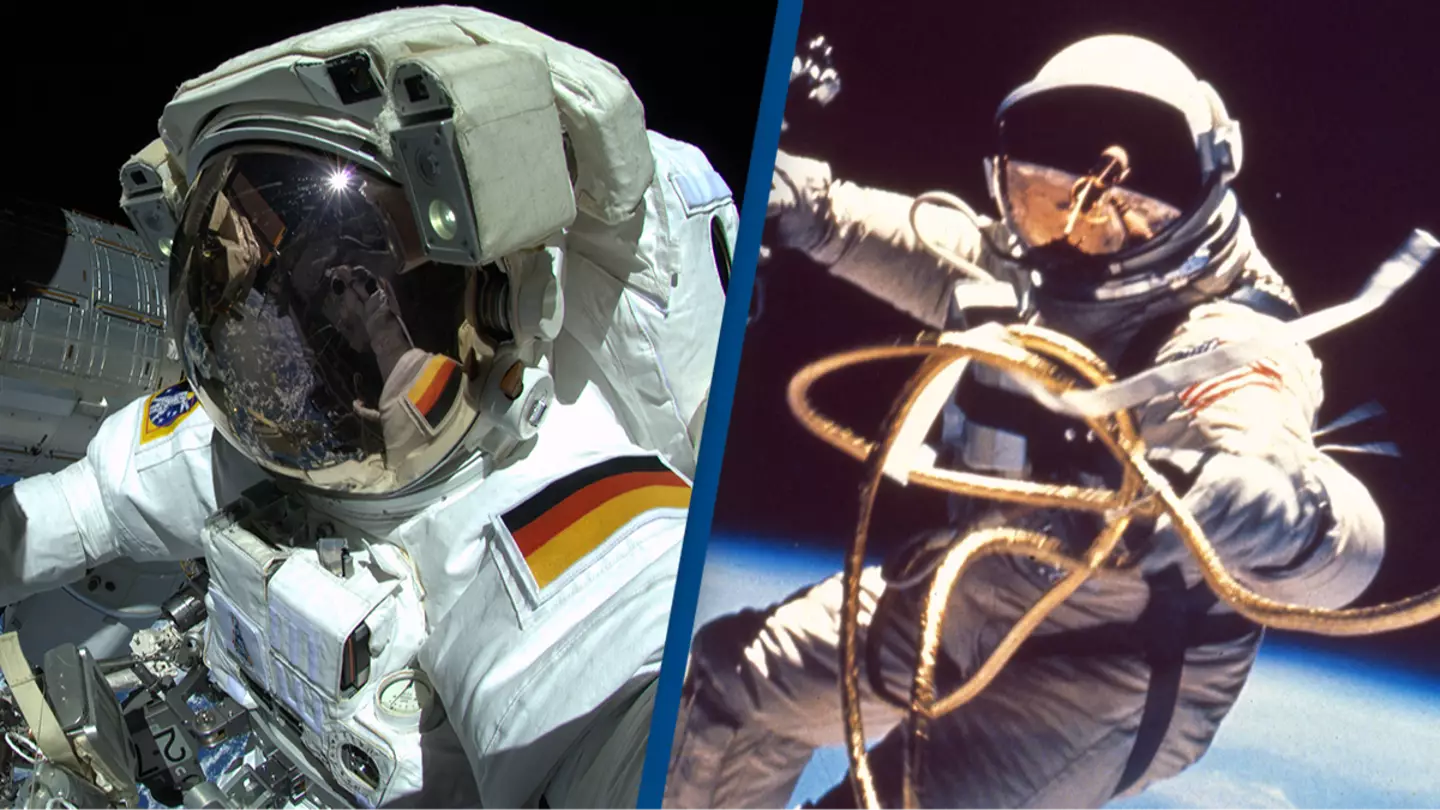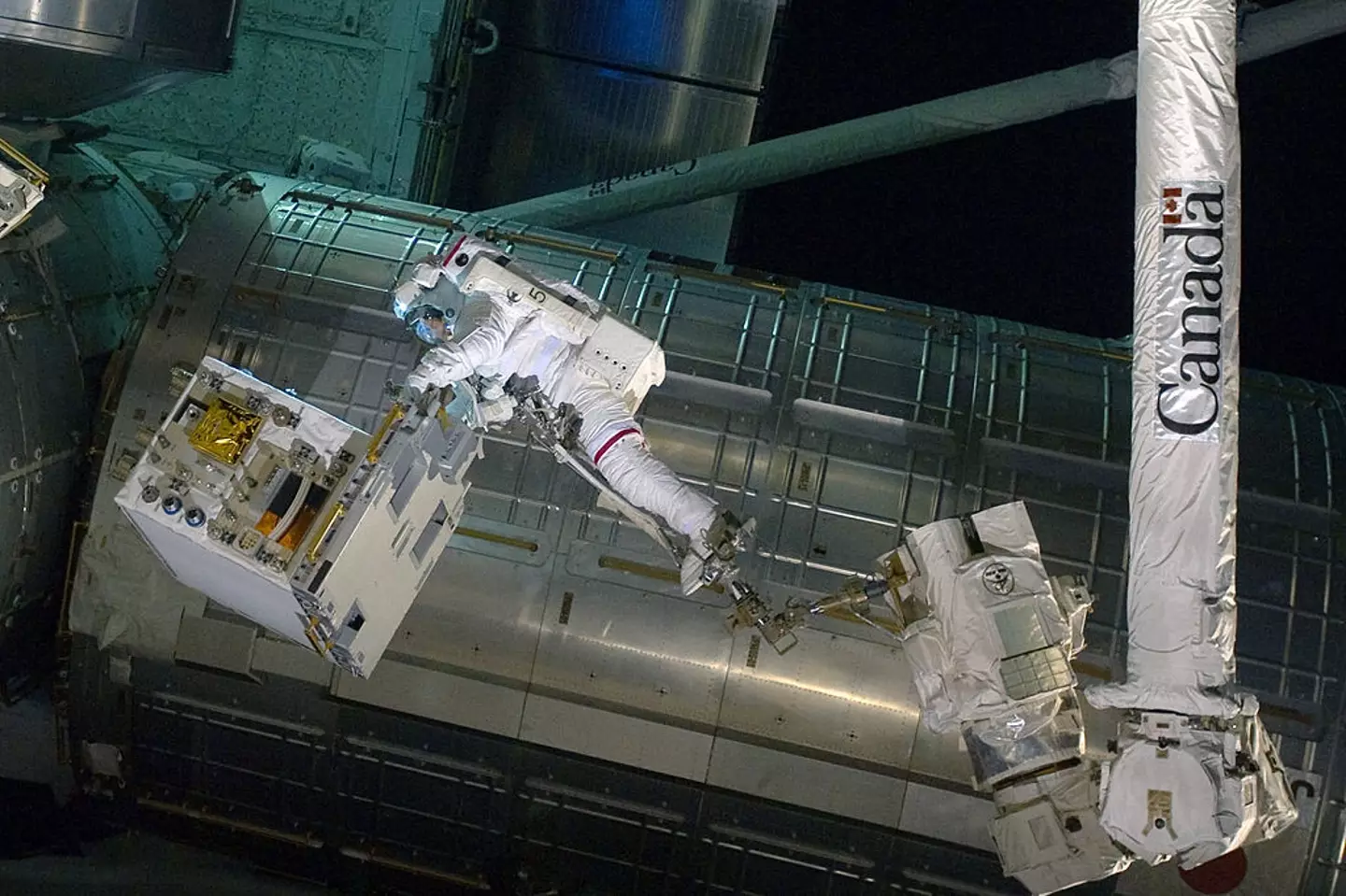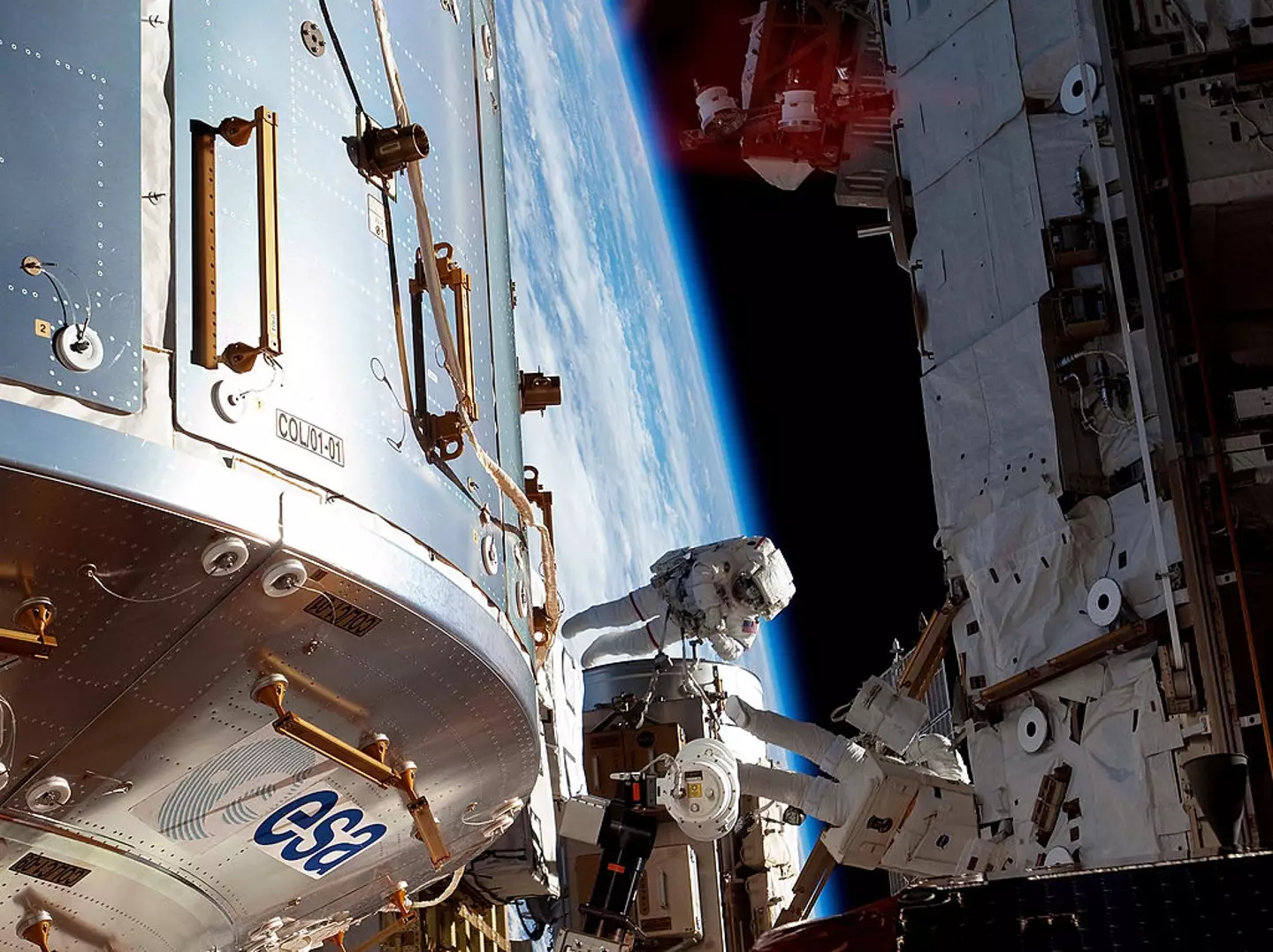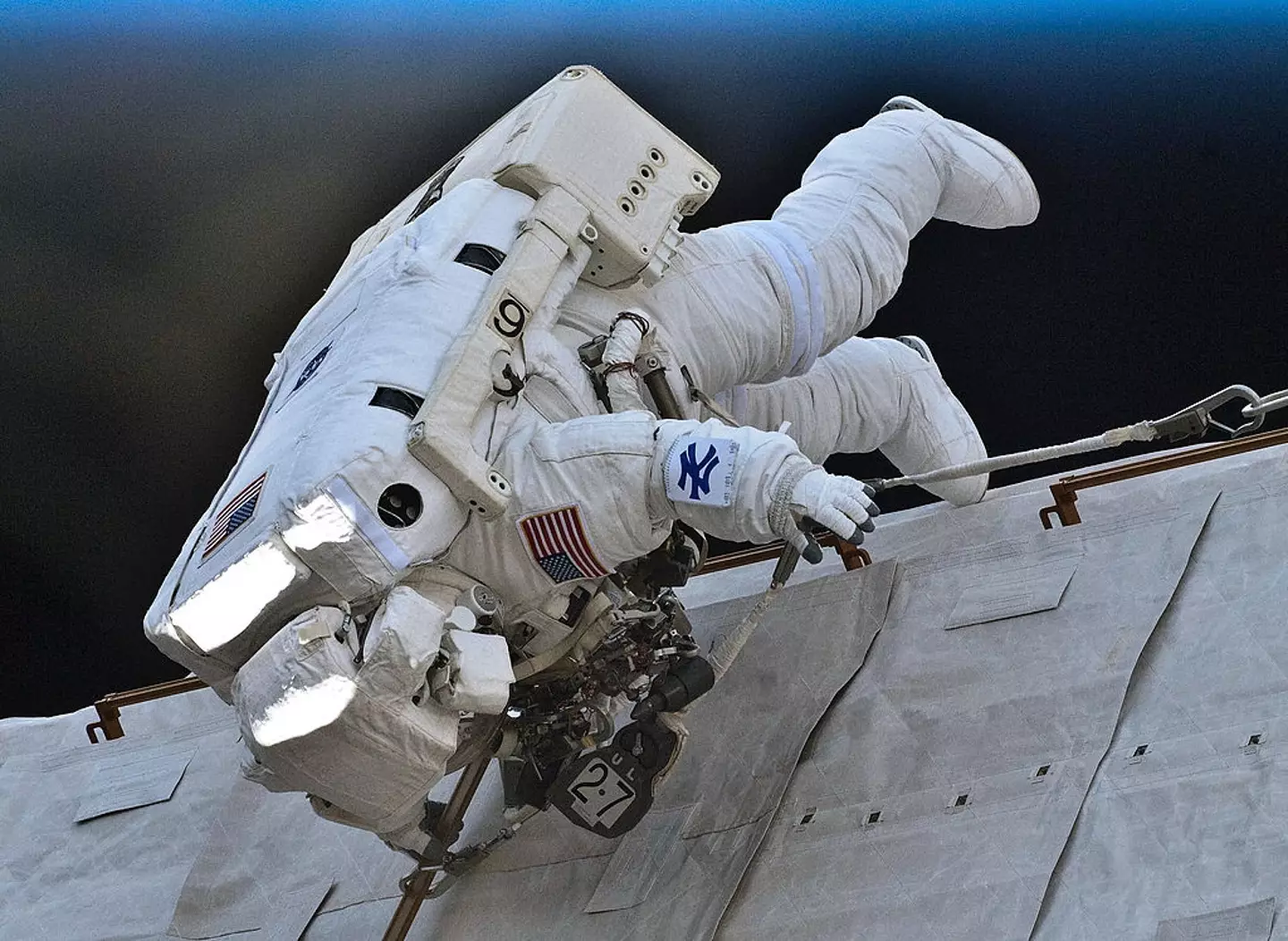
Topics: Space, Science, Technology, Health, Environment
Technology buffs reckon they've come up with a way to make life up in the stars easier for astronauts - and it involves them drinking their own pee.
Yes you read that correctly, and no it's not as gross as you may think.
New technology is currently being developed which would allow astronauts the ability to drink their own urine while out on spacewalks.

Advert
Currently, when carrying out restoration duties outside the International Space Station (ISS), among many others, they must put on diapers - so that if they do need to pee they can do so without it flying around their suit.
But wearing diapers isn't very futuristic is it? Heck, these are people literally out of this world and they currently wear what babies wear.
Well to give these disposable nappies their space name, they are maximum absorbency garment's (MAGs), and they were created in the early 1980s.
They work exactly like a diaper does but the only thing is that if a baby was left in their's without being changed for up to eight hours it would be classed as child neglect - unless of course that period is bedtime.
Advert

Well, that's how long some astronauts spend on spacewalks outside the ISS - although I'm sure they would alleviate their bladders beforehand so they wouldn't have to 'go' in them straight away.
Just like with babies diapers, if MAGs aren't replaced they can irritate your skin and even cause infection - as well as them feeling rather uncomfortable.
What's more, is while they are floating outside of the space station they only have a maximum of 0.2 gallons of water that they can store in their in-suit drink bag.
Advert
Well, leave it to the scientists to find a solution.

It would involve astronauts wearing underwear made from a flexible compression material and lined with antimicrobial fabric, and it would be fitted with a humidity sensor which will know when urine is prevalent.
When it senses pee a vacuum then comes on and it sucks the urine up into a filtration device on the astronaut's back.
Advert
What's more is that it takes just five minutes until you are able to drink the fresh water.
However, it is still in testing but if it makes it out of the final stages it might interest NASA and other space agencies - like Elon Musk's SpaceX.
Although it is not likely to be ready before 2026.